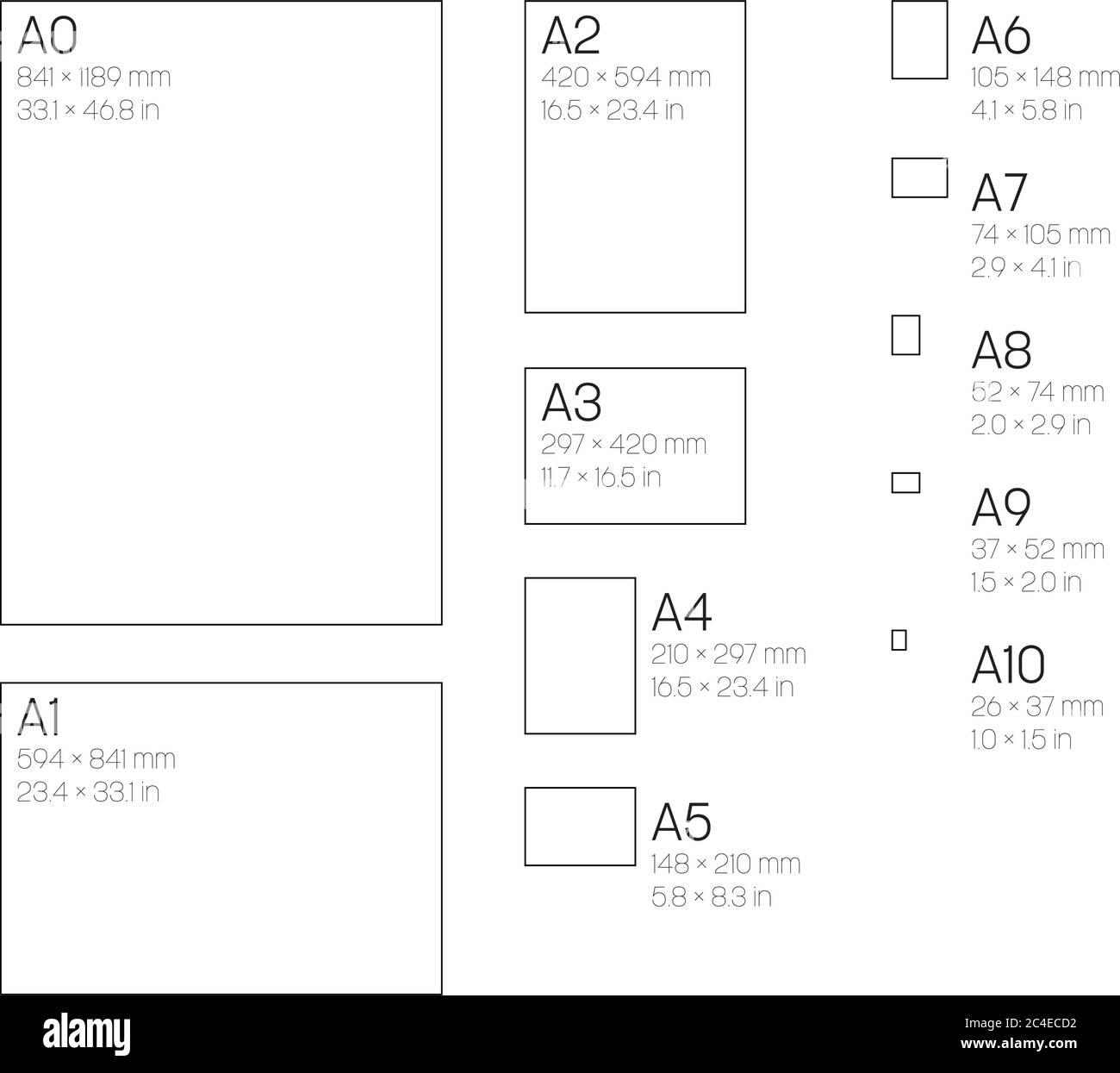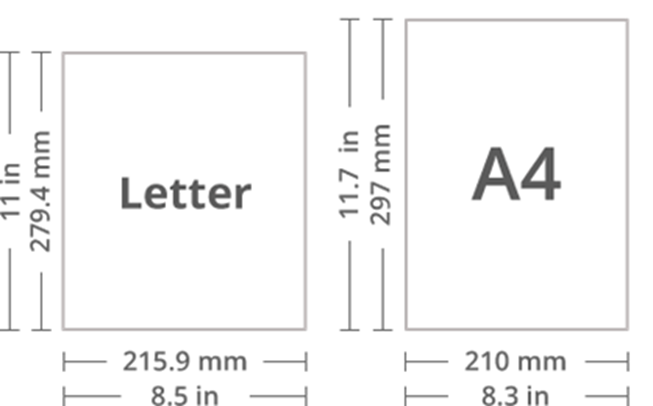a4 paper, a ubiquitous presence in offices, schools, and homes around the world, is a standardized paper size renowned for its versatility and convenience. Its widespread adoption has made it the de facto choice for various documents, correspondence, and printing applications. In this article, we will delve into the world of A4 paper, exploring its dimensions, usage, and other relevant aspects.
Understanding the Dimensions of a4 paper in inches

The Standard Size of A4 Paper
A4 paper, as per the International Organization for Standardization (ISO) 216, measures:
- Length: 297 millimeters (11.69 inches)
- Width: 210 millimeters (8.27 inches)
The aspect ratio of A4 paper is approximately 1.414, meaning that the length is roughly 1.414 times the width. This specific ratio ensures that A4 paper maintains its proportions when folded or cut.
Converting A4 Paper Measurements to Inches
For clarity and convenience, here’s a table converting the dimensions of A4 paper from millimeters to inches:
| Dimension | Millimeters | Inches |
|---|---|---|
| Length | 297 | 11.69 |
| Width | 210 | 8.27 |
Alternative Sizes and Proportions of A4 Paper

A4 paper belongs to the A series of paper sizes, each designated with a specific aspect ratio. Here are some common paper sizes similar to A4 paper:
- Letter (US): 215.9 x 279.4 mm (8.5 x 11 inches)
- A3: 297 x 420 mm (11.69 x 16.54 inches)
- A5: 148 x 210 mm (5.83 x 8.27 inches)
- B5: 176 x 250 mm (6.93 x 9.84 inches)
Understanding these alternative sizes can be beneficial when selecting the appropriate paper for different printing or design requirements.
Measuring A4 Paper Accurately

When working with A4 paper, precision in measurement is essential for ensuring the desired outcome of your project. Here are some tips for accurately measuring A4 paper:
- Use a ruler with clear markings to measure the length and width of the paper.
- Align the paper neatly along the edges to get an accurate measurement.
- Double-check your measurements to avoid errors in cutting or printing.
By measuring A4 paper accurately, you can prevent wastage and ensure a professional finish to your documents or designs.
Using A4 Paper Effectively in Different Applications
A4 paper’s versatile size makes it suitable for a wide range of applications in offices, schools, and creative projects. Here are some common uses of A4 paper:
- Printing Documents: A4 paper is ideal for printing reports, essays, presentations, and other textual content.
- Design and Art Projects: Artists and designers often use A4 paper for sketches, drawings, and mock-ups.
- Filing and Organization: A4 paper fits neatly into folders, binders, and filing cabinets, making it perfect for organizing documents.
By understanding the diverse applications of A4 paper, you can leverage its flexibility to meet your specific needs effectively.
Optimizing A4 Paper Usage for Printing and Design
To maximize the potential of A4 paper for printing and design purposes, consider the following tips:
- Print Settings: Adjust the print settings on your printer to ensure that the content fits correctly on A4 paper.
- Margins and Bleed: Leave sufficient margins and bleed space when designing for A4 paper to avoid cropping during printing.
- Paper Quality: Select the appropriate paper quality (weight, finish) based on the printing requirements of your project.
By optimizing your A4 paper usage, you can achieve high-quality prints and designs that meet professional standards.
Tips for Printing and Cutting A4 Paper to Inches
When printing or cutting A4 paper to inches, follow these guidelines to ensure accuracy and precision:
- Use a Cutting Mat: Place the A4 paper on a cutting mat with inch markings for precise cutting.
- Marking Guidelines: Use a ruler and pencil to mark the cutting lines before cutting the paper to the desired size.
- Sharp Tools: Use sharp scissors or a paper cutter to achieve clean, straight cuts without damaging the paper.
Following these tips will help you achieve consistent results when printing and cutting A4 paper to inches for your projects.
FAQs About a4 paper size in inches
Q1: Can I resize an A4 document to fit US letter size (8.5 x 11 inches)?
Yes, most printing software and applications allow you to adjust the document size to accommodate different paper sizes.
Q2: Is A4 paper compatible with all printers?
A4 paper is a standard size supported by the majority of printers worldwide, making it a versatile choice for printing documents.
Q3: How can I convert A4 measurements from inches to pixels for digital design?
You can use online converters or design software that allows you to input measurements in inches and converts them to pixels for digital projects.
Conclusion
In conclusion, A4 paper’s standardized dimensions and versatile nature make it a popular choice for various printing and design applications. By understanding its dimensions in inches, alternative sizes, and effective usage tips, you can optimize your workflow and achieve optimal results in your projects. Whether you’re printing documents, creating artwork, or organizing files, A4 paper offers the convenience and reliability you need for successful outcomes.The A4 paper size, with its precise measurements and universal acceptance, has become the de facto choice for various documents, correspondence, and printing applications. In this article, we delved into the world of A4 paper, exploring its dimensions, understanding its proportions, and learning how to measure it accurately.
We discussed the standard size of A4 paper, highlighting its length of 297 millimeters (11.69 inches) and width of 210 millimeters (8.27 inches), along with its aspect ratio of approximately 1.414. Converting these measurements to inches provided a clearer perspective on the dimensions of A4 paper.
Exploring alternative sizes and proportions of paper within the A series, such as Letter (US), A3, A5, and B5, gave insight into the variety of options available for different printing and design needs. Understanding these variations can help in selecting the most suitable paper size for specific projects.
Measuring A4 paper accurately is crucial for achieving the desired outcome in any project. With tips like using a ruler with clear markings, aligning the paper neatly, and double-checking measurements, one can ensure precision and professionalism in their work.
A4 paper’s versatility allows for effective use in various applications, from printing documents and creating art projects to organizing files. Leveraging its flexibility can enhance productivity and efficiency in different settings.
Optimizing A4 paper usage for printing and design involves considerations like adjusting print settings, leaving margins and bleed space, and selecting the right paper quality. By following these tips, one can achieve high-quality prints and designs that meet professional standards.
Printing and cutting A4 paper to inches require attention to detail and the use of appropriate tools like cutting mats, rulers, and sharp scissors. Adhering to guidelines ensures accuracy and consistency in the final output of projects.
Addressing common FAQs about A4 paper size clarified doubts regarding resizing documents, printer compatibility, and converting measurements for digital design. This comprehensive guide aims to equip individuals with the knowledge and skills needed to make the most of A4 paper in their creative endeavors.
In conclusion, A4 paper stands as a reliable and versatile choice for a wide array of printing and design tasks. Its standardized dimensions, coupled with practical tips and insights shared in this article, empower users to harness the full potential of A4 paper for successful outcomes in their projects. Whether you’re an artist, a designer, a student, or a professional, A4 paper remains a steadfast companion in your creative journey.
Printing and Design: A4 paper provides ample space for designing flyers, brochures, posters, and other promotional materials. Its dimensions offer a balance between content and white space, creating visually appealing layouts.
Storage and Organization: A4 paper fits neatly into folders, binders, and filing cabinets, making it perfect for organizing documents.
By understanding the diverse applications of A4 paper, you can leverage its flexibility to meet your specific needs effectively.